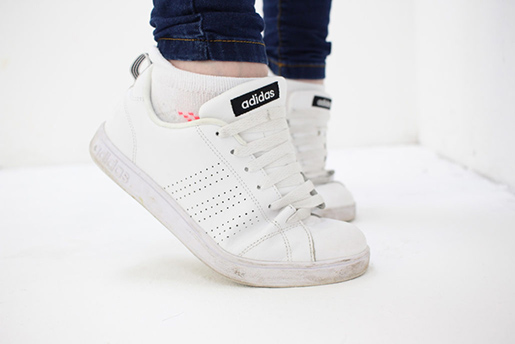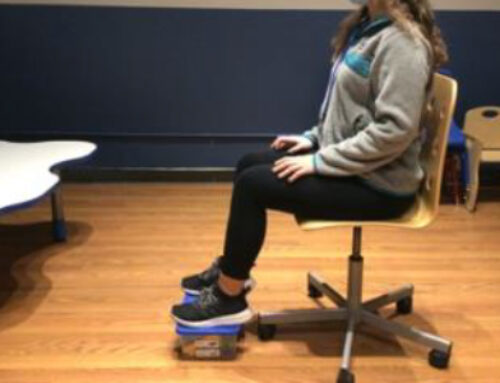You may notice your child frequently walking on their toes. Though it is prevalent among children on the spectrum, you may also see it in children who are typically developing. This blog will discuss the potential causes of toe walking, the effects of toe walking on development, and what you can do to minimize it.
What causes it?
There are many reasons a child may toe walk. The following causes are not an exhaustive list.
Sensory: Your child may be seeking increased input into their feet and walk on their toes to increase the sensation on the balls of their feet. Or perhaps they want to decrease input into their heel. They may have an adverse reaction to sensory input to their feet. In this case, your child likely has a full range of motion at their ankle.
Range of motion: Your child may have a shortened Achilles tendon, which may physically prevent them from being able to bring toes toward their face when sitting with legs straight in front.
Increased tone: Tone describes the amount of tension in a muscle at rest. When a muscle has increased tone, it means that there is more tension in the muscle. This potentially may make bending a joint difficult. In this case, the calf muscle of children who walk on their toes may have increased tone and prevent them from easily bending their ankle.
How does it affect development?
Toe walking can have many detrimental effects on development and the long-term integrity of the muscles, joints, and alignment of the body. First, it may lead to a shortened Achilles’ tendon, if that wasn’t the cause, to begin with. Having a decreased range of motion in the ankle can affect the long-term alignment of the rest of the body and cause other problems down the road. It can cause flat arches, hyperextension at the knees, and even lower back problems.
Additionally, a child who walks on his or her toes may miss out on opportunities to strengthen major muscle groups in their body, such as their quadriceps, gluteus, and core muscles. When a child walks on their toes, they don’t need to activate these muscle groups as much because toe walking creates a more passive posture. As a result, they may not attain gross motor skills, such as jumping forward greater than 12 inches, performing deep squats, or standing up from the floor through a half kneel.

What can you do?
The first thing to do is to pinpoint the cause of toe walking. It may be just one, or a combination, of the causes listed above.
Range of motion: If range is the cause, you can have your child do stretches to help increase the range at their ankle. Ask your child’s physical therapist for stretches that are most appropriate for them. If stretches do not effectively increase the range of motion at your child’s ankle, they may be eligible for orthotics to gradually increase range over time. Ask your child’s physical therapist if orthotics would be right for them.
Sensory: If your child is seeking increased input, try having them wear socks with bumps on the bottom of the heel to increase input to the heel and encourage them to keep their heel down. If your child has an adverse reaction to input to the heel, gradually introduce them to a variety of sensory play on the bottom of their feet. Ask your child’s occupational therapist on how you can do this.
Exercises: You can have your child perform the following exercises to bring their weight back onto their heels and stretch their Achilles tendon:
- Deep squats: have your child stand shoulder-width apart and reach for a toy placed between their feet.
- Crab walks: walking on hands and feet, belly facing up.
- Bear walks: walking on hands and feet, toes pointing forward, belly facing down.
- Standing on wedge: toes on the thicker side, heels on the thinner side. They can stand in this manner while playing with toys at a table.
- Core strengthening: sit-ups, sitting on an elevated surface and reaching for toys on the floor.
Toe walking is a complex issue with a variety of causes and solutions. Ask your child’s physical or occupational therapist for more specific information on your child’s toe walking.

Blue Bird Day fosters socialization, sensory regulation, and pre-academic learning in children ages 2-7 years in therapeutic rotations that simulate preschool and kindergarten settings. Our compassionate therapists practice a relationship-based and family-centered approach, provide parent training, and collaborate on goals and individualized intensive treatment plans for your child.
We believe in a collaborative and multi-disciplinary team approach to therapy. A team of occupational therapists, speech-language pathologists, dietitians, developmental therapists, behavioral therapists, physical therapists, and therapeutic assistants are created for each child to ensure child and family are fully supported and the best possible results are achieved.
Options for individualized, group and virtual therapy sessions are available as well.
Want to learn more or you have a specific question? Feel free to connect with us here!



